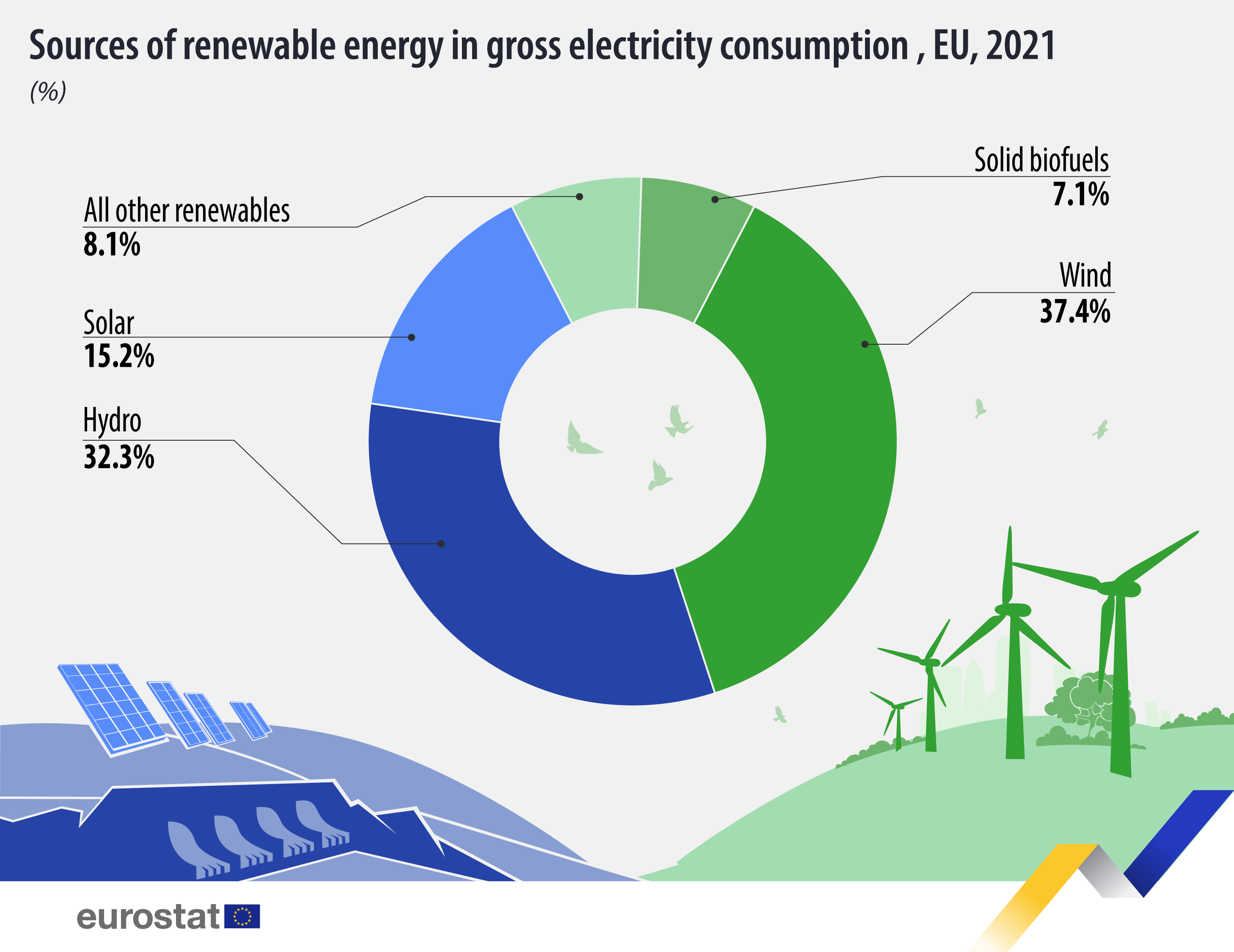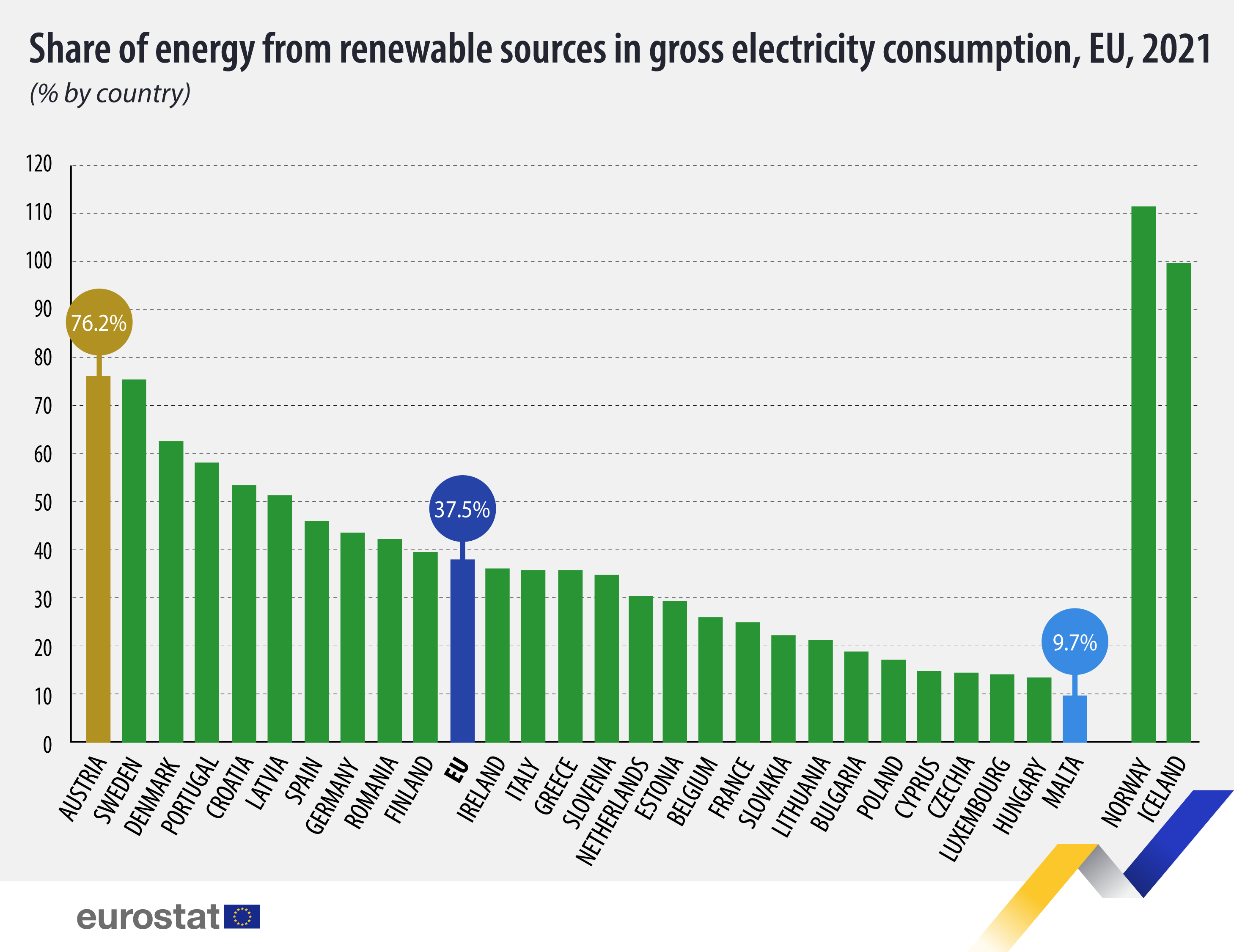Electricity from renewable sources on the rise

In absolute terms, the production of electricity from renewable energy sources increased by almost 5% from 2020 to 2021. However, also gross electricity consumption increased mainly due to economic recovery after lifting COVID-19 restrictions. As a result, the share of renewable energy sources in gross electricity consumption in the EU only increased by 0.1 percentage points (pp), from 37.4% in 2020 to 37.5% in 2021.
Wind and hydropower accounted for over two-thirds of the total electricity generated from renewable sources (37% and 32%, respectively). The remaining one-third of electricity came from solar power (15%), solid biofuels (7%) and other renewable sources (8%). Solar power is the fastest-growing source; in 2008, it only accounted for 1% of the electricity consumed in the EU.
Source dataset: nrg_ind_ren
Three quarters of electricity in Austria and Sweden came from renewable sources
In 2021, more than three quarters of gross electricity consumption in Austria (76.2%, relying mostly on hydro) and Sweden (75.7%, mostly hydro and wind) was generated from renewable sources. These EU Member States were followed by Denmark (62.6%, mostly wind), Portugal (58.4%, wind and hydro) and Croatia (53.5%, mostly hydro).
Source dataset: nrg_ind_ren
At the other end of the scale, the lowest shares of electricity from renewable sources were reported in Malta (9.7%), Hungary (13.7%), Luxembourg (14.2%), Czechia (14.5%) and Cyprus (14.8%).
For more information
- Statistics Explained article on renewable energy
- Thematic section on the short assessment of renewable energy resources (SHARES)
- Thematic section on energy
- Database on energy
- Shedding light on energy in the EU 2022- interactive edition
- Interactive energy visualisation tools
- News article on renewable energy targets
Methodological notes:
- Hydro is normalised (averaged over a number of years to smooth out the effects of climatic variation) and excluding pumping. Wind is also normalised (and from 2021 onwards as per RED II separately for on-shore and off-shore). Solar includes solar photovoltaics and solar thermal power generation. All other renewables include electricity generation from gaseous and liquid biofuels, renewable municipal waste, geothermal, and tide, wave & ocean. Only electricity produced from compliant liquid biofuels can be accounted. For 2021 onwards (as per RED II), also solid and gaseous biofuels combusted in installations above a certain threshold need to comply with sustainability and greenhouse gas emissions saving criteria.
- Data until 2020 are calculated on the basis of Directive 2009/28/EC (RED I), while data for 2021 follow DIRECTIVE (EU) 2018/2001 of 11 December 2018 on the promotion of the use of energy from renewable sources (RED II). Due to the change of legal basis, a break in series occurs between 2020 and 2021. Readers are encouraged to analyse the differences between both Directives (RED I and RED II) as described in the point above, the energy sector and all national specificities before drawing any conclusions from the comparison of year 2021 with previous time series. The SHARES Manual provides details on the methodology used for the calculation of the share of renewables.
If you have any queries, please visit our contact us page.


